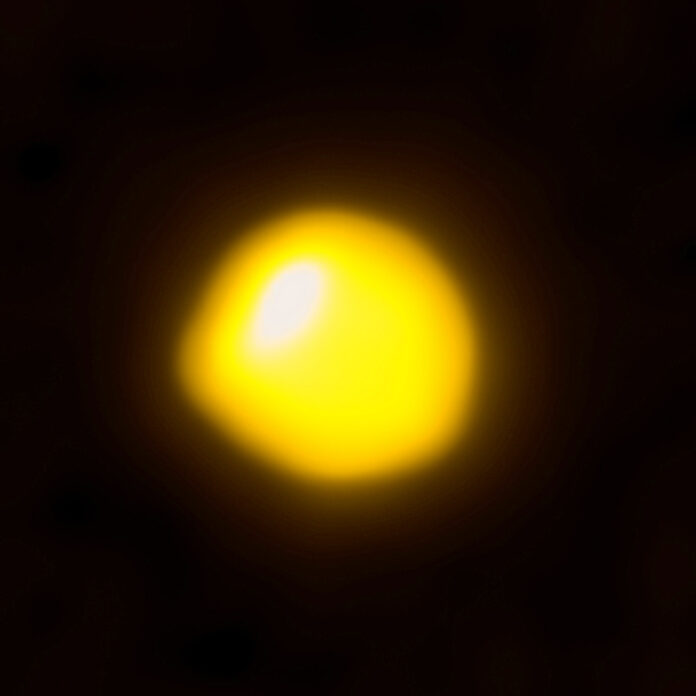Betelgeuse is situated on the shoulder of the Orion constellation. While not the brightest star in the constellation, yielding to Rigel, it nonetheless garners special interest among stargazers. This is because Betelgeuse is nearing the end of its life cycle and could explode at any moment. When this happens is uncertain; it could be tomorrow or even a thousand years from now.
This supergiant has been known since ancient times. Translated from Arabic, its name means “the armpit of the central one,” as Orion was sometimes referred to as the Twins in Arabic astronomy. Betelgeuse ranks tenth among the brightest stars.
Betelgeuse remains visible from almost anywhere on Earth for nearly half a year (from September to March). It disappears from view in June and July but can be detected during the day with a powerful telescope.
Key Characteristics:
- A red supergiant with periodically changing brightness and size.
Its radius fluctuates due to stellar pulsation (approximately from 500 to 800 times that of the Sun). - Mass: about 20 times that of the Sun.
Volume: about 300 million times that of the Sun, making Betelgeuse approximately 1,000 times larger than our Sun. - Surface temperature: 3,600 K.
- Age: twice as old as the Sun (10 billion years).
- Rotation speed around its axis: 15 km/s, higher than other red supergiants, likely due to absorbing a neighboring star at some point.
- Space velocity: 30 km/s.
- Distance from the Sun: 200 parsecs.
- Luminosity: 80,000 times that of the Sun. The maximum level of light emission is 100,000 times greater than that of the Sun. Giant sunspots covering Betelgeuse influence its brightness. Additionally, brightness decreases during the star’s pulsation due to atmospheric instability.
At its peak visibility, it appears brighter than Rigel and becomes the eighth brightest star in the sky. At its minimum, it falls to the 20th brightest.
The most significant drop in Betelgeuse’s brightness was observed in early 2020, but within a couple of months, the star’s brightness returned to its previous level. The true cause of this event has yet to be determined.
Interesting Facts About Betelgeuse:
- The star has different names in various cultures, with at least three translations from Arabic: “Al-Zira,” “Al-Mankib,” “Al-Yad al-Yamna.”
- Betelgeuse’s red glow is visible to the naked eye.
It was one of the first stars for which the angular diameter was measured using an interferometer. - Betelgeuse is believed to have two companion satellites of its own.
Betelgeuse’s light obscures the nearby gas nebula. - There is a high likelihood of the supergiant exploding at the end of its life cycle and giving rise to a neutron star, which would eventually become undetectable without special instruments. If this does not happen, Betelgeuse may become a white dwarf by shedding its outer layers.
- If Betelgeuse were to explode, we would see another small sun in the sky. This phenomenon would last for several weeks, after which the star would be impossible to detect even with the most powerful telescopes.
- Earth has nothing to fear, as the distance to Betelgeuse is too great (642.5 light-years). The power of the resulting shockwave upon reaching our system would dissipate, and the speed would neutralize the oncoming solar wind.
